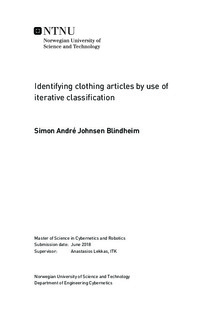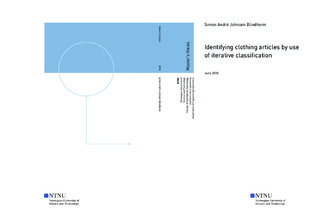| dc.contributor.advisor | Lekkas, Anastasios | |
| dc.contributor.author | Blindheim, Simon André Johnsen | |
| dc.date.accessioned | 2018-09-28T14:03:19Z | |
| dc.date.available | 2018-09-28T14:03:19Z | |
| dc.date.created | 2018-06-28 | |
| dc.date.issued | 2018 | |
| dc.identifier | ntnudaim:18540 | |
| dc.identifier.uri | http://hdl.handle.net/11250/2565297 | |
| dc.description.abstract | Supervised machine learning is commonly applied in order to give machines the ability to
assign labels to input data. Given a set of categories, the machine is tasked with identifying which class new observations belong to. This thesis focuses on the use of a previously implemented and trained convolutional neural network to iteratively classify disfigured clothing articles, with the help of a robotic manipulator and a combination of classic computer vision techniques. The clothing in question is observed initially deformed, i. e. wrinkled or partly folded on a table, and the proposed algorithm reads and processes image and depth sensor inputs in order to plan the appropriate moves which the manipulator will carry out. The suggested final approach can to a satisfying degree classify and separate up to three different clothing items after a given number of iterations. As the robotic manipulator regrettably became inoperable under development, the direction of this work was eventually redirected to investigate the challenges encountered while processing and classifying sensor inputs alongside the intended manipulator control. The proposed scheme utilizes well-known computer vision techniques in order to plan the desired grasping points and movement trajectory for the manipulator, which in turn moves the iterative classification algorithm forward until a desired prediction goal is met. | |
| dc.language | eng | |
| dc.publisher | NTNU | |
| dc.subject | Kybernetikk og robotikk, Robotsystemer | |
| dc.title | Identifying clothing articles by use of iterative classification | |
| dc.type | Master thesis | |

